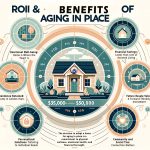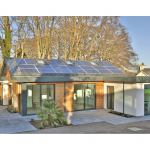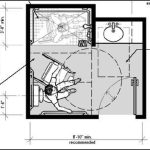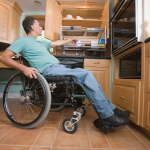Your loved one has just finished rehab after suffering a fall. Things are fine now, right? No not so fast, have you considered taking steps for fall prevention?
Statistics show that seniors who have already had a fall are at twice or even triple the risk of falling again.
This is really bad news, because falling can have incredibly serious outcomes for older adults. Among individuals who are 65 years and older, falls are a leading cause of broken hips, fatal injuries, and even traumatic brain injuries.
Just as bad, many seniors who experience falls develop an increased fear of falling, which can negatively impact their quality of life and prevent them from engaging in everyday tasks.
It doesn’t have to be this way though. You can engage in fall prevention at home in a variety of ways, including:
- Learning if the senior takes medications that might cause light-headedness or dizziness, which could result in another fall.
- Re-evaluating the number and types of medications to determine if they are necessary, some may be reduced or eliminated altogether.
- Ensuring the senior undergoes annual eye-checkups, as vision problems have been known to cause falls.
- Ask their health care providers about appropriate physical activity and exercises for them – particularly ones that focus on enhancing balance and coordination.
- Picking shoes that won’t lead to slips, tripping, or falling (e.g. ones with non-slip soles that aren’t too thick and that fit appropriately).
Of course, one of the most helpful things that you can do is help make house modifications for elderly that improve their safety. Many of these updates are cost-effective and can be done relatively quickly.
Home Modifications That Can Help Seniors Safely Live at Home after a Fall
On the floor
- Even out all floorboards
- Secure all rugs to the floor using non-skid pads, double-sided tape, or tacks
- Make sure carpeting is in good condition, with no frayed or loose edges/areas
Along the stairways
- Install handrails along both sides of the steps
- Ensure that the handrails are securely fastened and not broken
With lighting
- Have light switches installed at the bottom and top of the stairs
- Install automatic, light-sensor nightlights in bedrooms, hallways, bathrooms, and stairways
- Make the lighting uniform in all parts of the house so all spaces are well lit
- Have a lamp (and phone) placed next to beds
In the bedroom
- Bed linens should be adjusted so as not to hang on the floor
- Install a bed rail
- Get a chair with arms to help your loved one get dressed
- Lower the closet rack to shoulder height (or as needed)
- Provide a bedside commode if they are concerned about going to the bathroom at night
In the bathroom – fall prevention is most important
- Remodel the bathroom for handicap accessibility for ease of movement in and out of shower or bath
- Regularly scrape off any soap build-up that may accumulate in the shower or tub
- Install non-slip strips in the shower and tub
- Install grab bars on the wall at the bath, shower, and toilet, and secure them with reinforcements so they don’t come loose
- Use non-slip pads or double-sided rug tape to secure bath mats to the floor
- Install a shower seat – preferably one with adjustable height
- Install an elevated toilet seat
- Place a nonslip rubber mat inside the shower
- Place a rubber-backed mat outside the shower
In all rooms
- Ensure walkways are always free from clutter
- Run all cords along the wall or secure them firmly to the floor with tape
- Provide cordless telephones
- When setting up chairs, tables, and other furniture around the house, leave adequate room to allow direct seating as well as assistive devices (e.g. walkers)
- In kitchen, make sure appliances are easy to reach (e.g. raised dishwasher, wall oven, refrigerator drawers)
Outside the home
- Cover holes and repair any uneven joints on walkways
- Ensure entryways and all walk areas are properly lit
- Install handrails along both sides of any steps
- Ensure leaves, ice, and snow do not accumulate on stairs and walkways






